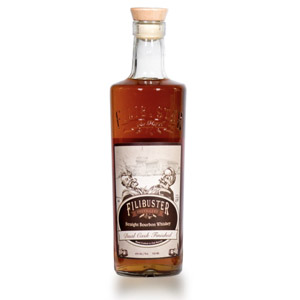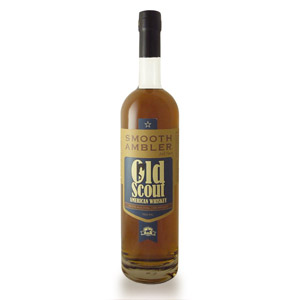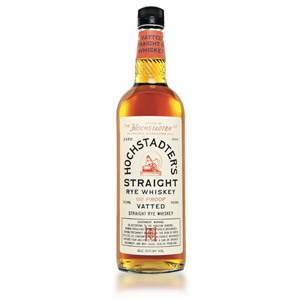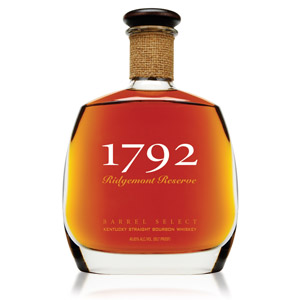Up until recently, I was in the whisk(e)y industry’s sweet spot: Between 21 and 30 years of age, with money in my pocket and a budding interest in fine spirits for sipping. I wanted to know more about the wide world of single-malt Scotch, Cognac, and Bourbon. I wanted to elevate my drinking from cheap cocktails and bargain-bin wine and beer. I’ll admit I was swayed by the media “image” of malt whisky: The James Bond character brooding over a tumbler (no ice!) of Talisker. The American corporate executive pouring something priceless from crystal decanters. The debonair bar patron ordering two fingers of Glen-something, “neat.” I wanted to be able to use words like “neat” to demonstrate to the world my coming-of-age: my graduation from college parties to the era of the discerning drinker. I was a gold-mine for whisky marketing departments.
So the question on my mind is: what is the industry doing “right” and what are they doing “wrong” when it comes to future customers-for-life like me? Now that I’ve done some reading and some tasting and discussed whisky with a few passionate connoisseurs, I can see more clearly the traps that were laid for me, and the excellent products which totally “missed the mark”. I can also put into words the frustration which I experienced (and continue to experience) as whisky empties my wallet and leaves me wanting more.
The Marketing Trap
Everyone in my position wants basically the same thing: To know which available whiskies align perfectly with my personal tastes, and which make the most efficient use possible of my drinks budget. I don’t want to settle for a sub-standard drink if I can afford a better one. I don’t want to settle for the first decent flavor that comes along, if there might be a less-known drink which is tastier. I also don’t want to get hooked on a “platinum label” product which eats into my retirement fund because it’s the only product I can find that I like. There’s really only one way (as a casual consumer) to achieve this goal: Taste. Taste a lot. How can I know what to buy if I don’t taste it first? Therein lies the problem. There are hundreds of products at my ideal price point. I can’t possibly buy them all to pick my favorites – this would mean a great deal of drinking time and wasted money on bottles that don’t meet my needs. I can’t really depend on recommendations either. Since everyone’s tastes differ wildly, a glowing recommendation on one blog might lead to a purchase of a bottle of vile brew and the waste of $50. I just personally finished off a bottle of The BenRiach ‘Curiositas’ that I really didn’t care for, because I’d bought the bottle on a recommendation. By contrast, I love Laphroaig 10, which many people dislike for its medicinal and seaweedy character. Both are peaty, both are relatively equivalent in quality and similar in price, and yet I drink the Laphroaig and despise the BenRiach. The whisky companies (especially the blends) know that you aren’t able to sample one of everything to find your favorites. They know everyone gets tired of looking for greener grass at some point – they know if they get you early they might get you for life – and a lot of them (especially the “bar brand” blends) know they aren’t going to land you with flavor.
There’s the trap: heavy marketing, event sponsorship, product placement, and wide distribution. GlenCheapo knows they can get your business if it’s the only name you recognize on the bar shelf when you sit down. Here’s a good counter-point example: Pappy Van Winkle bourbon is (or so I hear from everyone) fantastic stuff. It’s an artisanal product made to strict quality standards in tiny limited quantities. Releases of the stuff sell out instantly. Pappy Van Winkle doesn’t need to advertise. The casual drinker has probably never heard of it, will never see it on a bar shelf, and isn’t likely to ever find it on the discount rack at the local convenience-slash-liquor store. He might drink Jack Daniels and Johnnie Walker Black for the rest of his life, never knowing that his dream whisky is there, just out of reach.
The Solution
Unfortunately, there isn’t a solution. At least not for Mr. Casual Drinker. Unless he subscribes to whisky mags, follows the big whisky blogs, goes to tasting events (often requiring airfare and hotel stays in addition to the $100 ticket), and makes friends with other burgeoning whisky lovers in order to participate in bottle shares and sample swaps (where do you find these people? I haven’t, yet!), he’s doomed to the brown-spirits shelf at his local watering hole for life.
In my opinion, there are some ways (whisky industry take note!) to lead Mr. Casual Drinker out of the dark, one taste at a time:
1. Bars. Some establishments pride themselves on their whisky selection – and that’s a good thing. There is no better way to taste a wide range of whiskies than to find a bar with a good selection and patronize them. Some of my favorite whiskies were discovered in this fashion. Ferreting out a bar with a selection like this sometimes isn’t easy, and many bars keep only a handful of bottles open for pouring, or (worse) leave a large number of mostly-empty bottles on the shelves for years at a time, irreversibly altering the whisky for the worse. Whisky companies need to spread their distribution efforts to bars – both improving selections and instructing bartenders in the proper storage and serving of good whisky. Bars could also do themselves a favor by providing a clear, up-to-date whisky list and advertising cut-cost pours to finish off nearly-empty bottles. Finally, if I have to assure my waiter that the bar has The Balvenie DoubleWood because “I saw it on the shelf”, then that restaurant ought to provide a whisky list.
2. Miniatures (50 ml bottles sold at liquor stores and online retailers). Unfortunately, the selection at any one location is usually abysmal, with 5 or 6 single malts at best. After diligently scouring the six liquor stores in my area, I located exactly 7 miniatures of actual single-malt Scotch. Whisky companies and importers should be pushing the sale of these miniatures, in vast variety, in every liquor store in the world. There should be counter displays, fancy packaging, and regular inventory. This, in my opinion, is the best way for less-known malts to get attention from that elusive casual drinker market. The loss leader of a few 50ml glass bottles and some packaging can mean the conversion of an impulse buy at the register to a loyal customer for life.
3. Drinks by the Dram. Masterofmalt.com and whiskysamples.eu provide this service. They open full bottles of whisky and portion them out into carefully sealed and labeled 30ml (3cl) bottles for online sale. The allows a customer to order many tastes without breaking the bank. Unfortunately, this practice is illegal (apparently?) in the US and shipping from the UK is expensive and lengthy. Your average casual drinker, of course, is unlikely to go to these lengths to try more whisky.
4. Whisky Clubs. Mostly unadvertised and unlisted, mostly found in Europe, and very difficult to start, clubs are the best way to try more whisky when you exhaust the selection at your local bars. With a regular meeting of 8 to 12 people with similar interest in whisky, everyone can split the price of a few bottles and benefit both from the social aspect of enjoying whisky with peers, and from the economic aspect of paying bottom-dollar to sample top-shelf spirits. This is something of a chicken-and-egg problem, though: if you have enough like-minded friends for a whisky club, then you don’t need one. If you don’t know those people already, then how are you to find one? I would like to see national clubs like the Single-Malt Scotch Whisky Society pushing the registration and listing of local clubs for this purpose.
5. Local tastings. Occasionally, whisky companies or retailers will sponsor small tasting events at local bars or other venues. Unless Mr. Casual Drinker is trolling the forums or has his ear to the ground, he’s not likely to find these frequently… especially in the US, where they are fewer and further apart. Retailers and whisky companies should be working harder to bring these events to the general public, and with adequate advertising as well. If I buy a bottle of GlenCheapo at my local Beverages-R-Us, I should be told about upcoming whisky tastings for other brands I might like, given a schedule, and instructed how to participate.
I no longer count as a casual drinker. The difficulty of sampling a variety of decent whisky in the US, coupled with my innately obsessive nature, drove me down the path of fanaticism. Since I troll forums, read blogs, discuss with connoisseurs, and go to great lengths to acquire tasting samples, I stand a good chance of one day settling on a cabinet full of (my) perfect whiskies, plus I will enjoy the lifelong pleasure of sampling a widening variety of new whiskies. The future is a lot more bleak for Mr. Casual Drinker. I’m saddened by the 90% of market share enjoyed by inexpensive blended whiskies, and the large number of those customers who might be so much happier drinking some of the artisanal bourbons, single-malt Scotches, and other fine whiskies of the world. – if only someone would give them a taste.






My issue with relying on bars to try out new whisky is mainly the price. A popular restaurant in SF is serving a pour of Johnnie Walker Green for $20. You can get the entire bottle of JWG (at Costco) for $40. So for the price of just two drinks at the bar, I could buy an entire bottle. The math usually doesn’t always work out to be this ridiculous, but I’ve found that most bar pricing doesn’t promote trying new whiskys.
A very well thought out and well written article. Agree wholeheartedly. @James K – yes, some bars make the economics of a trial unappealing. However, if you spend $20 on a drink and find out you do NOT like the $40 bottle of whiskey, you saved $20. If you do like it, the $20 wasn’t “wasted” because you found out you liked it without spending $40. That’s the risk. Like you, I don’t want to spend such money and find out I like it. That’s why I rely on certain reviewers/sites that I find I agree with or can trust/know what they mean and buy accordingly.
Hey SN – hit me at whatwhat.theemail at gmail dot com. Let’s talk about one of the whiskies you mentioned but haven’t tried. I think I can help you.
-RC
I am with you all the way SN. I am a budding whiskey drinker in that 21-30 age range and honestly the market is a hard one to grasp. I was fortunate enough to watch lots of Ralfy.com and through that found lots of other resources to get a grip on things.
On th bar issue, I tend to try mid level whiskeys if they are in a bar, but usually if its a single malt, its better odds to read some reviews and just buy a bottle or a half bottle and try it than track it down in a bar and pay the 10+ dollars to try it in what’s usually a sub par glass/ environment.
Count me as one of the aged 21 – 30 drinkers who is willing to shell out quite a bit of money for his whiskey vice. Like most of you I was basically on my own until I found drinkhacker.com about a year ago. Then slowly but surely I found the myriad of review sites and forums dedicated to whiskey. Without their guidance I’d still blindly be rummaging around in the dark not sure where to go or what to try next. Now I’ve started my own whiskey club with a group of friends, and was even savvy enough to snag two bottles of Pappy 15 last week. I’m trying to help my friends along the same path I traveled while expanding my own experience.
I’ve been reading your blog for awhile now and while I don’t remember all the bourbons you have tried I thought I’d give a list of some of my recommendations:
Wild Turkey Kentucky Spirit Single Barrel
High West Double Rye (or Rendevous)
Four Roses Small Batch
Buffalo Trace
Sazerac (makes an amazing Old Fashioned)
Old Weller Antique (amazing bargain IMO)
Great points. I would like to expand a bit on point 4.
Don’t worry about finding a club, start one on your
own with some friends. I did. It is a great way to try new
things because we all buy different whiskeies. A friend and
I started a club in, January of this year with four other buds.
We meet once a month and the host (chinese each month)
is the only one required to have a whiskey available for tasting.
Almost everyone brings a bottle though. The variety
of the is alwwys so wide different. This month we had Old
Overholt, Maker’s 46, Laphroaig 10 and 10 Cask Strength
(first expression of the new bottling), and Glenmorangie
18 year old. We have grow from 6 to 12 guys in 6 months.
Great fun! Go for it.
Great blog and I feel and share the same pain and passion. My discovery path is made of a few great salesguys at a couple of stores and trial and error. I purchased about 25 bottles between $60-120 in the last 3 years and only 3 were a disappointment or not worth the money. I know serve them with ice cubes to my undecerning relatives! My #1 advice to newbies is : older is not necessarily better…Macallan 21 doesn’t match the 18 and Oban 14 is a better one than the 18 IMHO. So go out, buy, drink and enjoy….being wrong is part of the journey and apart from Chivas 18, there are no bad scotches above $50, just some overpriced ones.
Excellent post and it has been the crux of the issue for me for years. I do everything you say in this post (samples from overseas, scouring for miniatures, getting pours in bars, local tasting events, etc…) and a couple more (buying and regifting the failures to those select friends who will not turn their noses up at open bottles).
The solution involves distillers making more samples and the some kind of US law allowing the shipment and delivery of samples. Until then – we’re still boxed in.
You’re way over thinking this
I agree with overprice. You are totally over-thinking this. Anyone can wine about the abundance of products in any market. I think your problem is that you think there is this “one” whiskey out there they won’t tell you about, and instead are making you waste your money on trying to find it. It doesn’t exist. Here is what I do: stick with what you know. Find a few good whiskies you like and sip on them. On ocassion, try something new. I have a full bar in my basement ranging from Jim Beam to Jameson to Blanton’s to my Remy Martin King Louis VIII and do you know what I have most days? Seagram’s 7 on the rocks with a splash of water. There is nothing wrong with the industry. There is something wrong with you wanting to try every product out there. Find some good bottles and sip away. Let your girlfriend drive. Don’t drink too much at once. Have a good day.
Hi Josh,
Thanks for commenting. For clarification, I don’t think there’s only “one” whisky out there for me. I think there are a range of whiskies, each one perfect for a different occasion, mood, budget, or point of progression in a journey of whisky discovery. My contention in this article is that wading through the massive numbers of available products to find the right ones is daunting, especially with the relative difficulty of sampling before one buys. Think of all the potential whisky consumers who bought the wrong bottle (something peated, something cask strength, something underwhelming, etc.), never finished the bottle, and haven’t come back to the whisky aisle. I’m glad you’ve found happiness with the selection you’ve settled on, but it doesn’t give you the right to tell me I should stop looking.
As a person interested in whisk(e)y, the best ways I found getting into it is going to tastings. If you live in a major city, there are liquor stores that offer tastings as well as major companies offering events. This year along, I went to a Glenlivet, Johnny Walker and MacClallan tasting all for free. The best idea I had was have whiskey tasting party with like minded friends. Everyone brought/shared the expense of a bottle. Get 5-10 people together and you have now tried at least 6 bottles you wouldn’t have otherwise. You have to be creative.